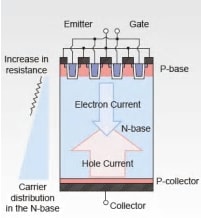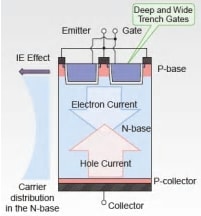- 半導體首頁
-
應用Automotive
Body Electronics
xEV
In-Vehicle Infotainment
Advanced Driver-Assistance Systems (ADAS)
Chassis
IndustrialInfrastructure
BEMS/HEMS
Factory Automation
Commercial Equipment
Consumer/PersonalIoT Equipment
Healthcare
Wearable Device
Mobile
Computer Peripherals
-
產品車用元件
Discrete Semiconductor
Diodes
電晶體
通用邏輯IC
Analog Devices
Digital Devices
Wireless Devices
※
: Products list (parametric search)
功率半導體※
: Products list (parametric search)
隔離器/固態繼電器Photocouplers
Digital Isolators
※
: Products list (parametric search)
MOSFETsIGBTs/IEGTs雙極性電晶體※
: Products list (parametric search)
Diodes※
: Products list (parametric search)
微控制器馬達驅動 ICs智能功率 ICs※
: Products list (parametric search)
電源管理 ICs線性 ICs※
: Products list (parametric search)
通用邏輯 ICs線性影像感測器其他產品其他產品
※
: Products list (parametric search)
-
開發/設計支援
開發 / 設計支援
-
技術知識
- 購買管道
- 型號 & 關鍵字搜尋
- 交叉搜尋
- 參數搜尋
- 線上庫存查詢跟購買
This webpage doesn't work with Internet Explorer. Please use the latest version of Google Chrome, Microsoft Edge, Mozilla Firefox or Safari.
型號需要超過三個文字以上 Search for multiple part numbers fromhere.
The information presented in this cross reference is based on TOSHIBA's selection criteria and should be treated as a suggestion only. Please carefully review the latest versions of all relevant information on the TOSHIBA products, including without limitation data sheets and validate all operating parameters of the TOSHIBA products to ensure that the suggested TOSHIBA products are truly compatible with your design and application.Please note that this cross reference is based on TOSHIBA's estimate of compatibility with other manufacturers' products, based on other manufacturers' published data, at the time the data was collected.TOSHIBA is not responsible for any incorrect or incomplete information. Information is subject to change at any time without notice.
型號需要超過三個文字以上
Principle of Operation
Cross-sectional structure of an IGBT and the factors that limit its collector-emitter voltage
圖A顯示了常規IGBT的截面結構以及N基極區域中的載流子分佈。從集電極到發射極,載流子濃度在整個N基極區域單調降低。為了增加IGBT的集電極-發射極電壓,在集電極和發射極之間必須有一個深N基極區。但是,深的N基區會導致載流子濃度降低。結果,電阻的增加導致電壓降的增加,從而導致導通電壓的增加。
Characteristics of the IEGT gate structure and the injection enhancement (IE) effect
以下圖B顯示了IEGT的橫截面結構和載流子分佈。 IEGT具有類似於IGBT的結構,具有比IGBT更深,更寬的溝槽柵極。這種結構增加了柵極到發射極的電阻,從而防止載流子穿過發射極。因此,在N基極區域中的發射極附近,載流子濃度提高。由於此現象與載流子注入和累積具有相同的作用,因此稱為注入增強(IE)效應。即使在高集電極-發射極額定電壓下,這種溝槽柵結構也有助於減少電壓降的增加。

由於發射極附近的載流子濃度低,因此集電極-發射極電壓額定值的增加導致導通電壓的增加。

發射極附近的載流子濃度在發射極附近增強。因此,電子注入增加,從而降低了導通電壓。

